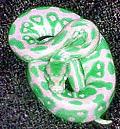» Site Navigation

0 members and 645 guests
No Members online
Most users ever online was 47,180, 07-16-2025 at 05:30 PM.
» Today's Birthdays

» Stats

Members: 75,944
Threads: 249,135
Posts: 2,572,308
Top Poster: JLC (31,651)
|
-
Registered User

Is it ok to breed brother with sister??
-
-
BPnet Veteran


Re: Is it ok to breed brother with sister??
your gonna get some people that say yes, and some that say no.... most will agree that breeding the daughter back to the father or son back to the mother is better than brother to sister. many breeders do all of the above.... ready for a ton of different answers??
-
-
Registered User

Re: Is it ok to breed brother with sister??
So then their r risks involved
-
-
Re: Is it ok to breed brother with sister??
The primary risk is that minor genetic mutations may become expressed--in other words, a hidden deformity could be brought to light.
Reptiles in general seem very resistant to the ill effects of inbreeding, however--much more so than mammals. If neither animal does carry any problem genes, then breeding siblings won't cause any problems. It should not be done repeatedly over generations, because this increases the risks--as the parents become more and more similar genetically, small errors will become magnified until you inevitably WILL get noticeable genetic problems.
But for just one generation? Little risk is involved.
Line breeding, which involves breeding a son or daughter back to its parent, is a standard practice for 'fixing' a trait in animal breeding. We use this to prove traits to be genetic, and force them to express. (Breeding a het daughter back to a homozygous father to produce more homozygous animals, for example). Like inbreeding, it should not be done repeatedly over generations.
-
The Following User Says Thank You to WingedWolfPsion For This Useful Post:
-
Re: Is it ok to breed brother with sister??
I can understand the risk, but would it be lessened if the male and female mated had different mothers but same father?
I picked up a couple hets like that.
Thanks
Brian
-
-
Banned


Re: Is it ok to breed brother with sister??
Brian from BHB, one of the worlds biggest reptile breeders says it is fine to breed brother to sister or brother to mother or sister to father just for one generation. He's says after breeding them generation into generation the egss become more infertile, more slugs and the ones that make it have a diesease or are kinked.
Daniel
-
-
Registered User


Re: Is it ok to breed brother with sister??
Doing it is fine but after the 3rd or 4th generation of inbreeding you might start seeing some deformites!
-
-
Registered User


Re: Is it ok to breed brother with sister??
I'd prefer you do it if you are "fixing' in a favorable trait. If you're merely trying to work with what you have, you may wish to consider swapping even with another breeder for an unrelated animal. If that's not an option for you, then you can line breed. But it will enhance the existing traits for good or for bad.
-
-
Re: Is it ok to breed brother with sister??
Yes, breeding half-siblings is less of a risk than breeding full siblings.
-
 Posting Permissions
Posting Permissions
- You may not post new threads
- You may not post replies
- You may not post attachments
- You may not edit your posts
-
Forum Rules
|